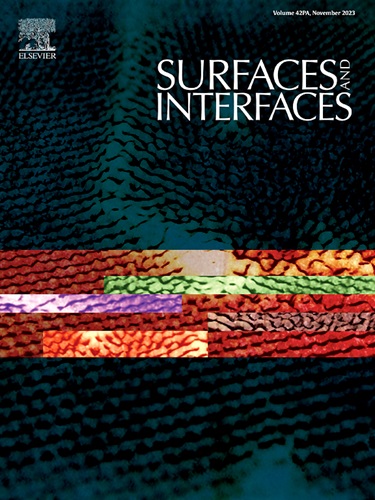Enhanced adsorption of emerging contaminants by green carbon nanotubes in binary and ternary systems
IF 5.7
2区 材料科学
Q2 CHEMISTRY, PHYSICAL
引用次数: 0
Abstract
Carbon nanotubes (CNTs) functionalized by green synthesis were assessed in adsorptive multicomponent systems to remove the nonsteroidal anti-inflammatory drug (NSAID) diclofenac and the antibiotics ciprofloxacin and ofloxacin. Kinetic and equilibrium studies were performed in binary and ternary systems. The kinetic models of pseudo-first and pseudo-second order fitted the multicomponent data very well. The equilibrium study revealed a slight adsorption capacity increase with the temperature rise and that the multicomponent adsorptive process is synergistic. The Langmuir-Freundlich model was the one that best fitted the binary equilibrium data. For the ternary system, the diclofenac data were not well represented by the equilibrium models, and this may have occurred due to its much faster adsorption than for the other two drugs, and the complexity of the process. The characterization techniques indicated that the adsorption process occurred efficiently and did not significantly modify the structure of the material, indicating that the process occurred only on its surface. π-π and n-π interactions, hydrogen bonds and electrostatic interactions are some of the adsorption mechanisms present in the process. Diclofenac adsorption was favored in the presence of the other two contaminants, and the modified CNTs showed great promise as an adsorbent in multicomponent systems.
绿色碳纳米管在二元和三元体系中对新出现污染物的增强吸附
绿色合成功能化的碳纳米管(CNTs)在吸附多组分体系中去除非甾体抗炎药双氯芬酸(NSAID)和抗生素环丙沙星和氧氟沙星。在二元和三元体系中进行了动力学和平衡研究。拟一阶和拟二阶动力学模型对多分量数据拟合较好。平衡研究表明,随着温度的升高,吸附量略有增加,多组分吸附过程具有协同作用。Langmuir-Freundlich模型是最适合二元平衡数据的模型。对于三元体系,双氯芬酸的数据不能很好地用平衡模型表示,这可能是由于它的吸附速度比其他两种药物快得多,以及过程的复杂性。表征技术表明,吸附过程发生有效,并没有显著改变材料的结构,表明该过程只发生在其表面。π-π和n-π相互作用、氢键和静电相互作用是吸附过程中存在的一些吸附机制。双氯芬酸在其他两种污染物存在时的吸附效果较好,改性后的碳纳米管作为多组分体系的吸附剂具有很大的应用前景。
本文章由计算机程序翻译,如有差异,请以英文原文为准。
求助全文
约1分钟内获得全文
求助全文
来源期刊

Surfaces and Interfaces
Chemistry-General Chemistry
CiteScore
8.50
自引率
6.50%
发文量
753
审稿时长
35 days
期刊介绍:
The aim of the journal is to provide a respectful outlet for ''sound science'' papers in all research areas on surfaces and interfaces. We define sound science papers as papers that describe new and well-executed research, but that do not necessarily provide brand new insights or are merely a description of research results.
Surfaces and Interfaces publishes research papers in all fields of surface science which may not always find the right home on first submission to our Elsevier sister journals (Applied Surface, Surface and Coatings Technology, Thin Solid Films)
 求助内容:
求助内容: 应助结果提醒方式:
应助结果提醒方式:


